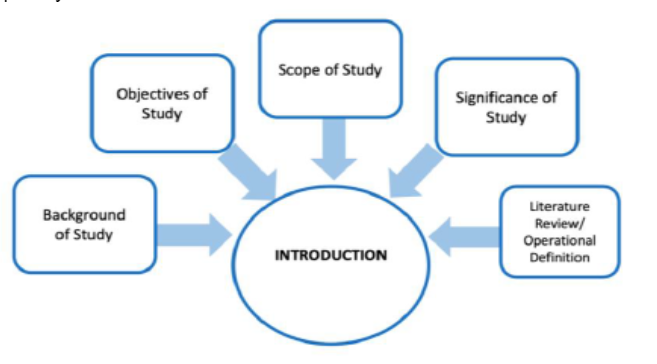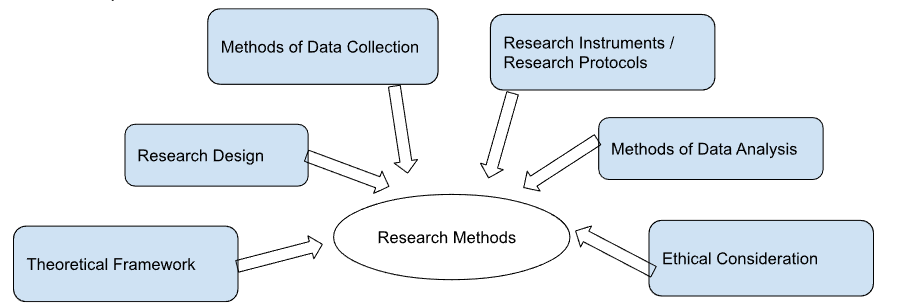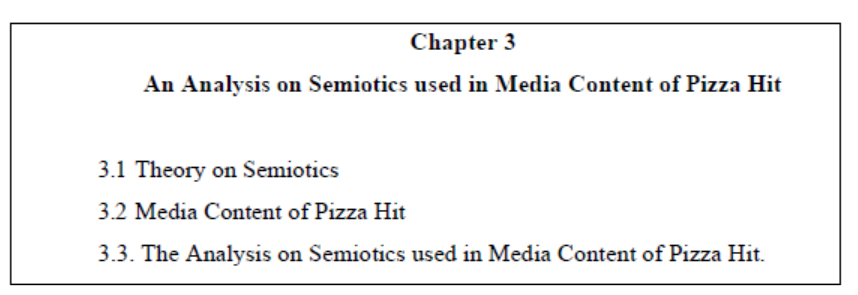In our own study program, we are required to compose a thesis proposal before conducting research for writing the thesis. There are basically two main categories of undergraduate thesis that can be selected, namely industrial based thesis and laboratory based thesis.
Industrial-based final projects allow students to write on a particular topic or issue they encountered during internship period. Students are encouraged to write about their tasks and performance they did as parts of the job responsibilities to solve the problem in industry. However, they are also encouraged to find the topics related to the use of English in the Public Relations field; for example, the content writing or copywriting process in bilinguals, creating English-language content for an organization, workplace communication in a company using English, cross-cultural communication using English and other languages, culture promotion in English, and so on.
Meanwhile, laboratory-based final projects allow students to explore topics outside their internship place, but are still related to the use of English in Public Relations. The topics may fall under the areas of applied linguistics such as semiotics, semantics, pragmatics, (critical) discourse analysis, systemic functional linguistics, multimodal analysis, corpus linguistics, translation and interpreting, and so on.
As for the format or parts of the final project, we follow IMRAD format, which is the acronym for Introduction, Methods, Results/Findings, and Discussion. Therefore, there will be 4 (four) main sections in the final project:
-
Chapter 1 Introduction: Background of the Study, Objectives of the Study / Research Questions, Scope of the Study, Significance of the Study, Literature Review, Operational Definition (optional)
-
Chapter 2 Research Methods: Theoretical Framework, Research Design, Methods of Data Collection, Research Instruments/Protocols, Methods of Data Analysis, Ethical Consideration (optional)
-
Chapter 3 Results/Findings and Discussion: descriptions of the results/ findings, analysis and interpretation of the results/findings, impact of the topic and how it relates with the previous studies or current knowledge
-
Chapter 4 Conclusion: brief answers to the objective of the study, closed by brief indirect suggestions/recommendations to the related parties involved, may include suggestions for future research
However, for the proposal, students are expected to finish drafting Chapter 1 Introduction and Chapter 2 Research Methods only, completed with some parts such as cover, table of content, list of figures, and abstract.
1.7.1 Introduction
An Introduction is the first passage in a journal article, dissertation, or scholarly research study. It sets the stage for the entire project. Wilkinson as quoted in Creswell (2018) mentioned the following:
The introduction is the part of the paper that provides readers with the background information for the research reported in the paper. Its purpose is to establish a framework for the research, so that readers can understand how it is related to other research.
The introduction establishes the issue or concern leading to the research by conveying information about a problem. Because it is the first passage in a study or proposal, special attention must be given to writing it. Other tasks assigned to the introduction are to grow readers‘ interest in the topic, establish the problem that leads to the study, place the study within the larger context of the scholarly literature, and reach out to a targeted audience. All of this is achieved in a concise section of a few pages. Considering the messages it must convey and the limited space it is allowed, introduction is challenging to write and understand.
A research problem is the problem or issue that leads to the need for a study. It can originate from many potential sources. It might spring from an experience researchers have had in their personal lives or workplaces. It may come from an extensive debate that has appeared in the literature. The literature may have a gap that needs to be addressed, alternate views that should be resolved or a branch that needs to be studied. Top sources of research problems are often multiple. Therefore, identifying and stating the research problems that underlies a study is challenging. When the problem is not clear, it is difficult to understand all the other aspects of a research study, especially the significance of the research. Furthermore, the research problem is often confused with the research questions- those questions that the investigator would like to be answered in order to understand or explain the problem. Therefore, introductions are needed to carry this complexity.
Figure 1.2. Chart for the contents of introduction
In the introduction, there are five (5) parts presented; namely background of study, objectives of study, significance of study, scope of study and literature review/ operational definition. Detailed information on the parts in the introduction will be explained in the next units.
1.7.2 Research Methods
The second chapter in the Final Project is Research Methods. Figure 1.3 illustrates the content of this chapter.

Figure 1.3. Parts of Research Methods
1) Theoretical Framework
A theoretical framework consists of concepts and, together with their definitions and reference to relevant scholarly literature, existing theory that is used for your particular study. The theoretical framework must demonstrate an understanding of theories and concepts that are relevant to the topic of your research paper and that relate to the broader areas of knowledge being considered.
The theoretical framework is most often not something readily found within the literature. You must review course readings and pertinent research studies for theories and analytic models that are relevant to the research problem you are investigating. The selection of a theory should depend on its appropriateness, ease of application, and explanatory power. The theoretical framework strengthens the study in the following ways:
-
An explicit statement of theoretical assumptions permits the reader to evaluate them critically.
-
The theoretical framework connects the researcher to existing knowledge. Guided by a relevant theory, you are given a basis for your hypotheses and choice of research methods.
-
Articulating the theoretical assumptions of a research study forces you to address questions of why and how. It permits you to intellectually transition from simply describing a phenomenon you have observed to generalizing about various aspects of that phenomenon.
-
Having a theory helps you identify the limits to those generalizations. A theoretical framework specifies which key variables influence a phenomenon of interest and highlights the need to examine how those key variables might differ and under what circumstances.
By virtue of its applicative nature, good theory in the social sciences is of value precisely because it fulfills one primary purpose: to explain the meaning, nature, and challenges associated with a phenomenon, often experienced but unexplained in the world in which we live, so that we may use that knowledge and understanding to act in more informed and effective ways.
2) Research Design
This part explains the approach of the research, whether it applies qualitative, quantitative, mixed methods, or other approaches including multimodal analysis, discourse analysis, and so on. Then, specific design should be selected such as a case study, a cross-sectional survey, experimental, or others. In this part, we should provide the definition of the selected research design based on some experts and justify why such design is appropriate for the particular research being planned by highlighting several characteristics of our study which match with the concept of a specific design.
After that, we can mention the context of our research including where the research will be conducted and justify the reason. Next, explaining the types of data will be used in the Final Project is necessary. Typically in quantitative research, researchers collect more than one type of data in order to get a better and more holistic picture about what is going on in the field. The data used in qualitative research is almost always in what people say or in words. This data usually comes from interviews, documents like newspapers or journals, observation and audiovisual materials such as videos or audio, etc. The data from quantitative research is in the form of numbers; these numbers usually come from what people check off in an instrument which is a survey questionnaire or observations checklist. Thus, qualitative research looks at words and quantitative research looks at numbers (Creswell, 2018).
The researcher usually obtains multiple types of these kinds of data in order to answer the research question, whereas all of this data comes from the field, which means the natural setting where the participants are. In qualitative research, researchers go into the field and spend a lot of time there interviewing, observing the participants and their environments. It is also important to note that surveys or questionnaires are also known as an instrument, while in qualitative research there are no instruments, but the researcher him/herself. In qualitative research the researcher acts as an instrument by asking all the questions, collecting observations instead of relying on surveys to gather data. It is also important to note that the hallmark of a qualitative research is its emergent design; this means the way in which the study is conducted can change during the study.
3) Methods of Data Collection
In this part, we need to explain the methods of data collection based on the research design determined. Data collection is a process in and of itself, in addition to being a part of the larger whole. Data comes in many different types, and can be collected from a variety of sources, including: observation, questionnaires, interviews, documents, tests and others.
The value of carefully selecting the questions to be examined is therefore of major importance: The way that the question is worded is the foundation for an effective data collection plan. It is important to develop a specific planning process for data collection (no matter how brief) in order to avoid the common pitfalls of the collection process, which include having: too little data to answer the question; more data than is necessary to answer the question; and/or data that is not relevant to answering the question.
In order to successfully manage the data collection process, we need a plan that addresses the following:
-
What types of data are most appropriate to answer the questions?
-
How much data is necessary? (sampling method)
-
Who will do the collection?
-
When and where will the data be collected?
-
How will the data be compiled and later stored?
-
How long will the data collection process be necessary?
The data collection plan should be explained in detail and clearly step by step to ensure the feasibility of the whole process. By creating a data collection plan, students can proceed to the next step of the overall process. In addition, once a particular round of data analysis is completed, students can then step back and reflect upon the contents of the data collection plan and identify ―lessons learned‖ to inform the next round.
4) Research Instruments / Research Protocols
This part contains information on the process of instrument or protocol development selected as tools to collect the data to answer the objectives of study. The term instrument is used when the study is quantitative in nature. For instance, we will use a test or a survey that must be developed before the data collection process is started. For quantitative studies, all the instruments are pre-determined and tested before they are used or administered. The process of developing the instruments must be explained in detail including the validity and reliability test as well as the piloting of the instruments. We need to check whether the instrument is valid and reliable or not. The validity and reliability of the instruments will result in the quality of data we collected. In this part, discuss the validity and reliability test of the instruments in this part so that the instruments obtained are reliable to measure whatever the data employed in the study. Reliability refers to the stability of findings, whereas validity represents the truthfulness of findings [Altheide & Johnson, 1994]. Without assessing reliability and validity of the research, it will be difficult to describe the effects of measurement errors on theoretical relationships that are being measured [Forza, 2002].
Meanwhile, if the research is qualitative in nature, we will use research protocol term. Research protocol should explain the process by which observation and interview will be executed, including what to observe and what questions to ask. If we are going to take a field note, we need to also explain how to do the field noting and the format of the field note used. By using various types of methods to collect data for obtaining true information; a researcher can enhance the validity and reliability of the collected data.
5) Methods of Data Analysis
This part contains explanations on how the data obtained are analyzed. Figure 4 depicts an illustration of data analysis in cyclical terms. Data analysis is a process to look at and identify what is going on, once the data have been collected. Data analysis in brief is a process to analyze the data. Because there are different types of data, the analysis of data can proceed on different levels. The wording of the questions, in combination with the actual data collected, have an influence on which procedure(s) can be used – and to what effects. The task of matching one or more analytical procedures or methods with the collected data often involves considerable thought and reflection.

Figure 1.4. Data Analysis in Cyclical Terms (Source: © AED/TAC-12 Spring 2006)
Interpretation is the next process to identify what the results mean. In some cases, the results of the data analysis speak for themselves. For example, if a program‘s teaching staff all have bachelor‘s degrees, the program can report that 100% of their teachers are credentialed. In this case, the results and the interpretation of the data are (almost) identical. However, there are many other cases in which the results of the data analysis and the interpretation of those results are not identical. For example, if a program reports that 30% of its teaching staff has an AA degree, the interpretation of this result is not so clear cut. In this case, interpretation of the data involves two parts: 1) presenting the result(s) of the analysis; and 2) providing additional information that will allow others to understand the meaning of the results. In other words, we are placing
6) Ethical Consideration
Ethical consideration refers to how our research adheres to ethical conduct. The study we implement must not infringe the ethics in the society. We should realize that the research we conduct is possible to unintentionally harm the subject involved in it. This could include psychological harm, financial harm, or social harm. As a researcher, we must consider whether any harm could occur during the research and how to mitigate that risk. Thus, it is essential that we carefully ensure to behave according to appropriate ethical standards; consider how the research might negatively affect participants; and protect ourself or our organization from being placed in situations where individuals could make claims of inappropriate behavior resulting in public criticism or even being sued. In this part, we need to explain the possible harm to occur, how to participate in the research, what measures we take to minimize the harm or mitigate the possible after-effect, and how we protect the rights and the privacy of the participants during and after the study.
1.7.3 Results/Findings and Discussion
This chapter is the highlight of the Final Project Report. In general, students explain the answer to their objectives of study in this part. Thus, the content of this part depends on the objectives of study stated in the Introduction. The main task of students as researchers is on how to write, report and or disseminate the findings. There are several basic suggestions to do this. First, good writing is structured to provide information in a logical sequence. In turn, good writers are strategic – they use a variety of strategies to structure their writing. One strategy is to have the purpose for the written work to be clearly and explicitly laid out. This helps to frame the presentation and development of the structure of the writing. Second, good writing takes its audience into account. Therefore, good writers often specify who their audience is in order to shape their writing. A final thought is to look upon the writing/reporting tasks as opportunities to tell the story of the data the students have collected, analyzed, and interpreted. From this perspective, the writing is intended to inform others of what the students have just discovered. Look at the sample outline in Figure 1.5, which shows the outline of the third chapter in general. It is not limited to three sub headings as the elaboration of this chapter depends on the objectives of study. It is important to note that Laboratory-based Final Projects are required to provide comprehensive theoretical background as the basis for topic discussion. Meanwhile, the Industrial-based Final Project requires more information on the internship place and work-related issues in the discussion. This chapter must at least comprise 45% of the whole Report.

1.7.4 Conclusion
The last body part of the Final Project is the conclusion. In this part, students answer their objectives of study in brief, based on the discussion of results and findings in the previous chapter. The convention for Final Project Report in terms of number of words is shown in Table 1.2.
Table 1.2. Final Project Report Convention

The final project proposal and report are typed in an A4 format, margin top and left 3 cm, and right and bottom 2 cm, using Times New Roman 12 pts in 1.5 space, except the abstract which is typed in single space.